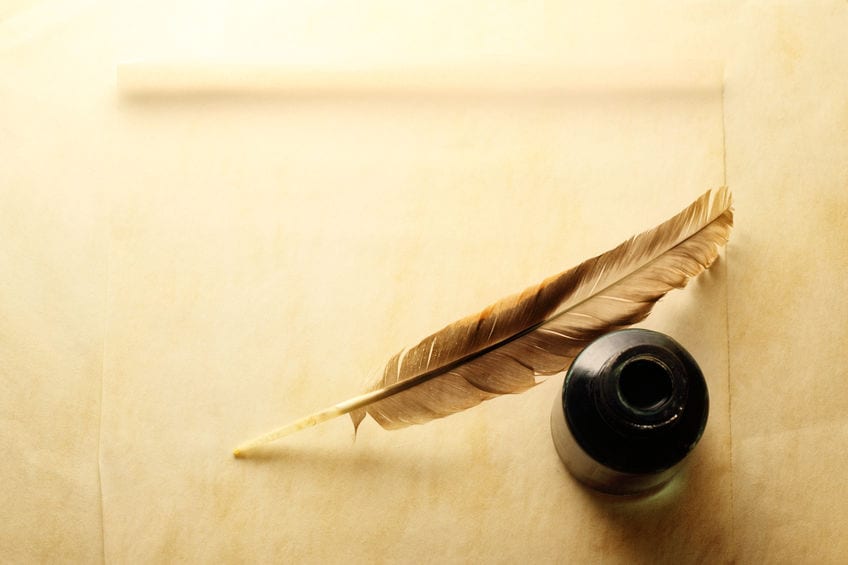
AUGUSTA, GA – Stating it is easier to use and provides infinitely more character than an electronic medical record (EMR), medical scribe Tim Penn prefers to use a quill with ink when performing documentation for physicians.
“There is something so classic and timeless about using a feather quill, sitting at a desk by the window, and by candlelight,” described Penn, who has always been a huge fan of the quill penmanship displayed on the Declaration of Independence and Magna Carta. “A computer mouse in the palm of my hand does nothing for me. But the feather of a Moulard duck? Now we’re talking.”
Before the advent of modern-day pens, a quill pen was used, which is basically a writing utensil made from the molted feather of a large bird.
“When talking about quills, I prefer goose feathers, followed by swan and turkey feathers,” Penn continued to explain. He went on a short tangent about feathers and capillary action before getting back to the topic at hand. “Though pigeon quills are crap, I’d much rather use that than our EMRs. As much as I love quill & ink, the fact of the matter is that EMRs are pieces of sh*t, pardon my French.”
Penn has a point. He showed me one history & physical he documented on the EMR: nothing too special. Then he showed me another history & physical he documented with quill & ink on a papyrus scroll no less, and one can’t deny the sheer beauty of the piece. Penn has incredibly beautiful handwriting and it should be showcased for other health care professionals and clinical documentation specialists to see.
Prolonged computer use can lead to carpel tunnel syndrome. Using quill & ink isn’t a pain-free proposition though, Penn says.
“More so than the development of the fountain pen, I think quill wrist is what led many writers to abandon it,” Penn said, dipping his 14-inch ostrich feather into his ink well. “But these sharp strokes are unmatched and there’s one added benefit: I’ve never, ever lost an ostrich quill. Think about it. How would I ever lose this?!”







